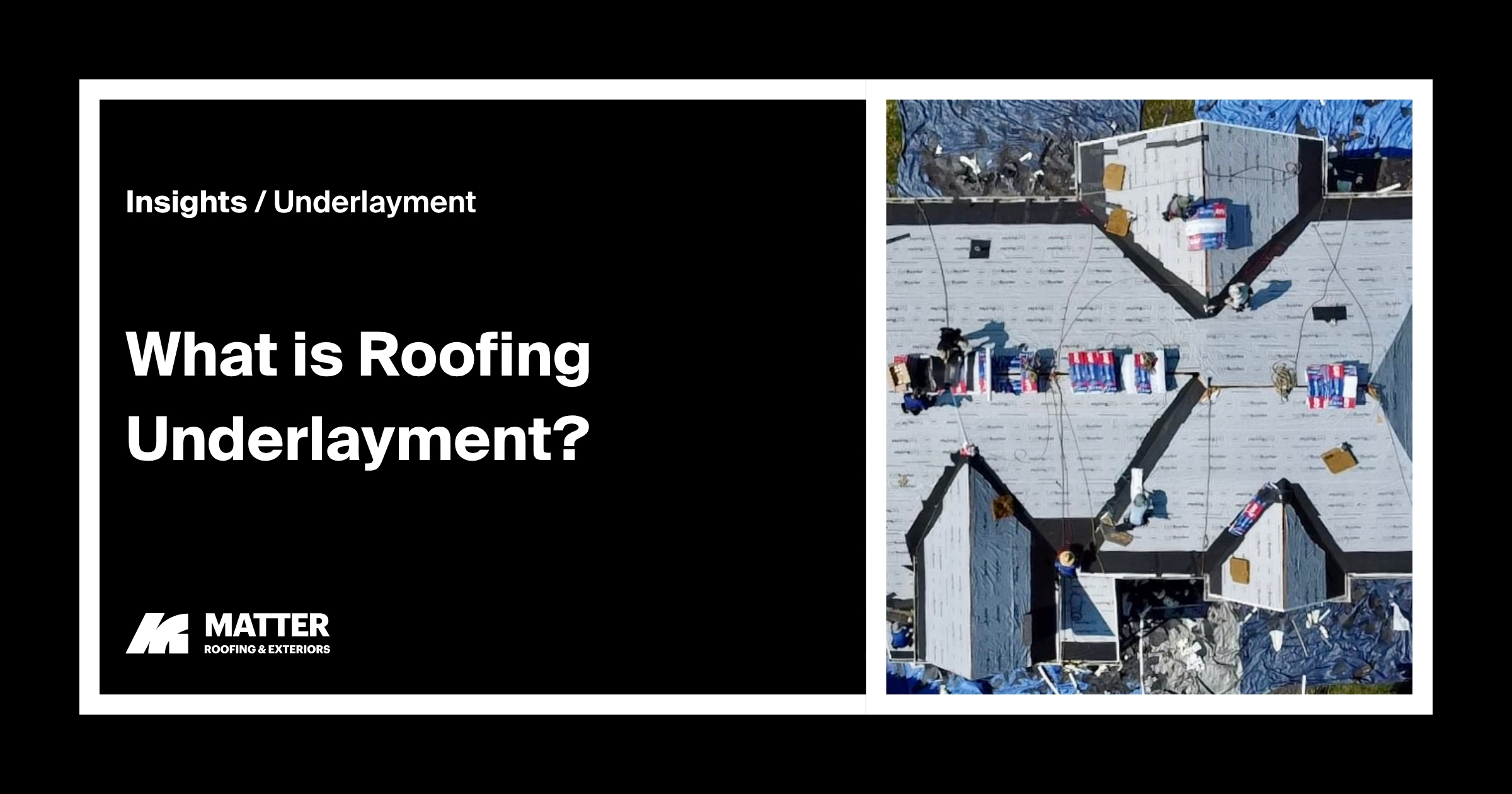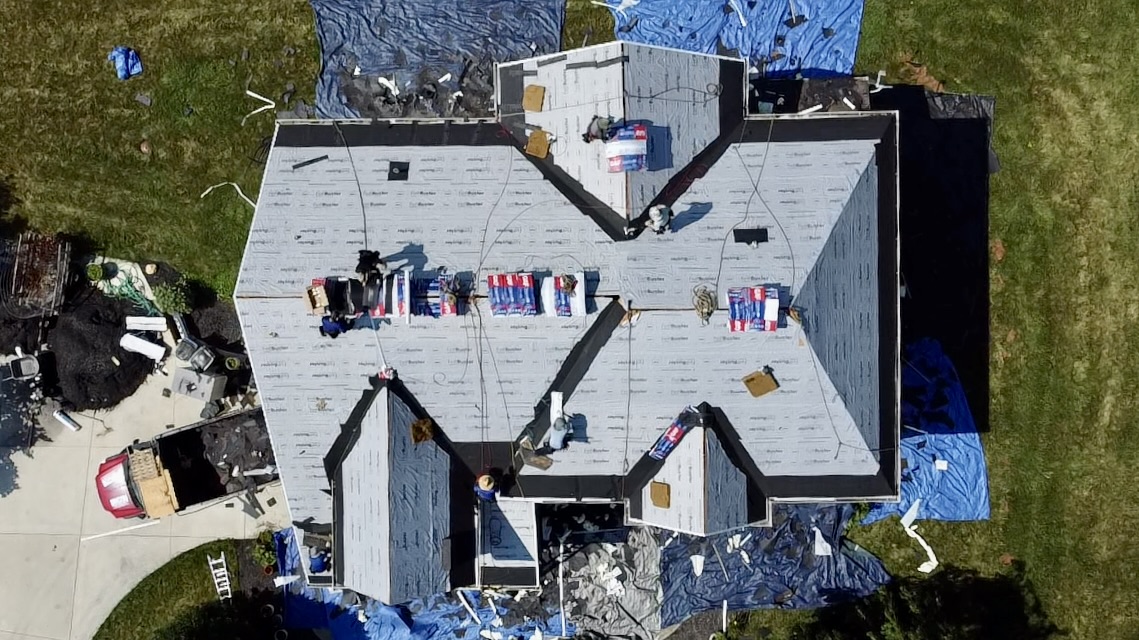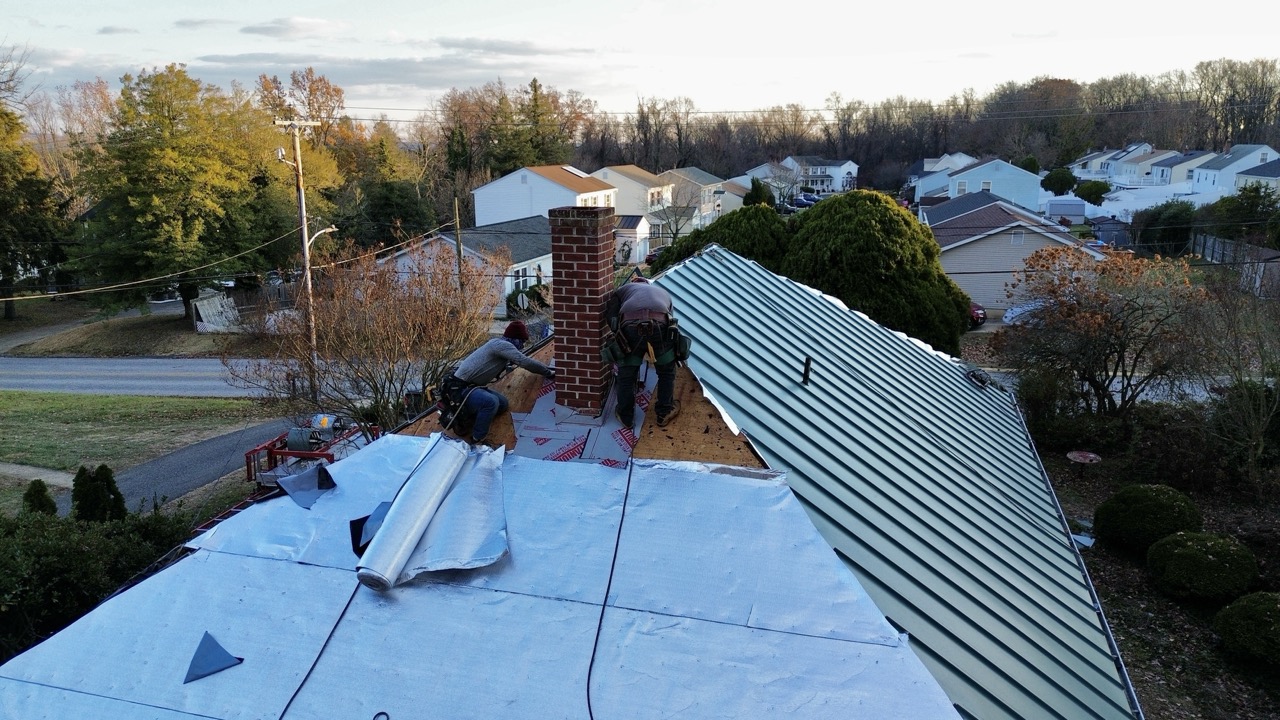What Is Roofing Underlayment?
Roofing underlayment is the protective layer installed directly on top of the roof decking and beneath the shingles or other roofing material. Its main purpose is to act as a moisture barrier, shielding the roof deck from rain, snow, and ice infiltration if the outer roofing layer is damaged or compromised.

This component is a critical part of every modern roofing system. It prevents water intrusion, improves overall roof performance, and provides an added layer of protection during extreme weather events.
Why It’s Important
Even the best shingles or roofing panels can lift or fail during high winds or severe storms. Without underlayment, water can easily penetrate the roof decking and cause interior damage. Roofing underlayment ensures your roof has a backup layer to keep your home safe and dry.
Types of Roofing Underlayment
There are three main categories of underlayment, each suited for different roofing systems and climates:
- Felt Underlayment (Tar Paper):
The traditional option, made of asphalt-saturated paper. It provides basic water resistance but is heavier and less durable than modern alternatives. - Synthetic Underlayment:
A lightweight, tear-resistant material designed for long-term durability. Synthetic underlayment is the most common choice for residential roofing today because of its superior strength, UV resistance, and ease of installation. - Ice and Water Shield:
A specialized self-adhering underlayment applied to vulnerable areas like eaves, valleys, and around roof penetrations. It seals around nails and prevents water from seeping through, even in ice dam or wind-driven rain scenarios.
What Maryland Homeowners Should Know
In Maryland’s four-season climate, underlayment is essential. We experience snow, heavy rain, wind, and temperature swings that put extra stress on roofing systems. Building codes require underlayment on all sloped roofs, and ice and water shield is mandatory at the eaves of heated structures.
Does Underlayment Go on Every Roof?
Yes. Every roofing system — whether shingles, metal, or flat roofing — requires some form of underlayment. For asphalt shingles, synthetic underlayment paired with ice and water shield offers the best long-term protection.


Our Approach at Matter Construction
We install premium synthetic underlayment and ice and water shield on every roof replacement project. These components are not upgrades — they are part of our standard roofing system because they deliver the best protection for Maryland homes.
Frequently Asked Questions
What is the purpose of roofing underlayment?
Roofing underlayment serves as a secondary water barrier beneath the shingles. It helps protect the roof deck from wind-driven rain, ice dams, and moisture intrusion.
Is roofing underlayment required by building code?
Yes. Most building codes, including Maryland’s, require underlayment beneath roofing materials on sloped roofs. Some also mandate specialized types like ice and water shield at the eaves.
What types of roofing underlayment are available?
The most common types are felt (asphalt-saturated paper), synthetic (poly-based sheets), and rubberized asphalt (self-adhering membranes). Each offers different levels of water resistance and durability.
What’s the difference between synthetic and felt underlayment?
Synthetic underlayment is more durable, lighter, and resistant to tearing than traditional felt. It also provides better water resistance and is now the industry standard for asphalt shingle roofs.
Can you install shingles without underlayment?
No. Skipping underlayment leaves the roof deck vulnerable to water damage. It’s a required component for warranty, code compliance, and long-term roof performance.

